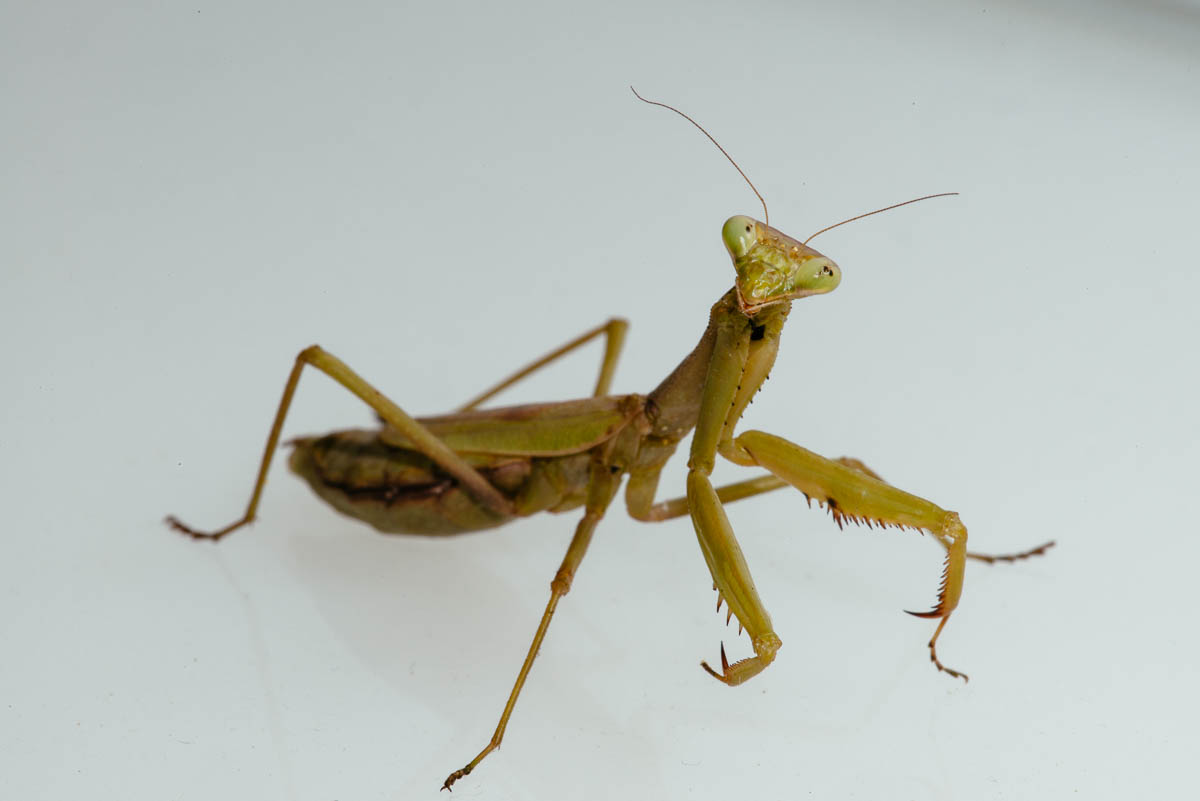
Creepy, Crawly Macro-Photographs
I love the Fall, with its crisp weather, spectacular foliage, and praying mantises. Yes, you read it right, I admittedly go bonkers over praying mantises.
It all started when I was a child and learned that in New York City it was against the law to kill a praying mantis (turns out that was an urban legend). Still, I was intrigued by these science fiction creatures and would creep up close to them and observe them, fascinated by their size and behavior.
Fast forward a couple decades and I landed an assignment to shoot a piece for a children’s wildlife magazine on the praying mantis life cycle. I managed to get some amazing images of a female biting off the head of the male she had just mated with, as well as baby mantises. Unfortunately, as they grew they had a tendency to eat each other. Too gory, the editors finally decided, paid me and canned the article. But I thoroughly enjoyed observing them, and learning about their fascinating adaptations.
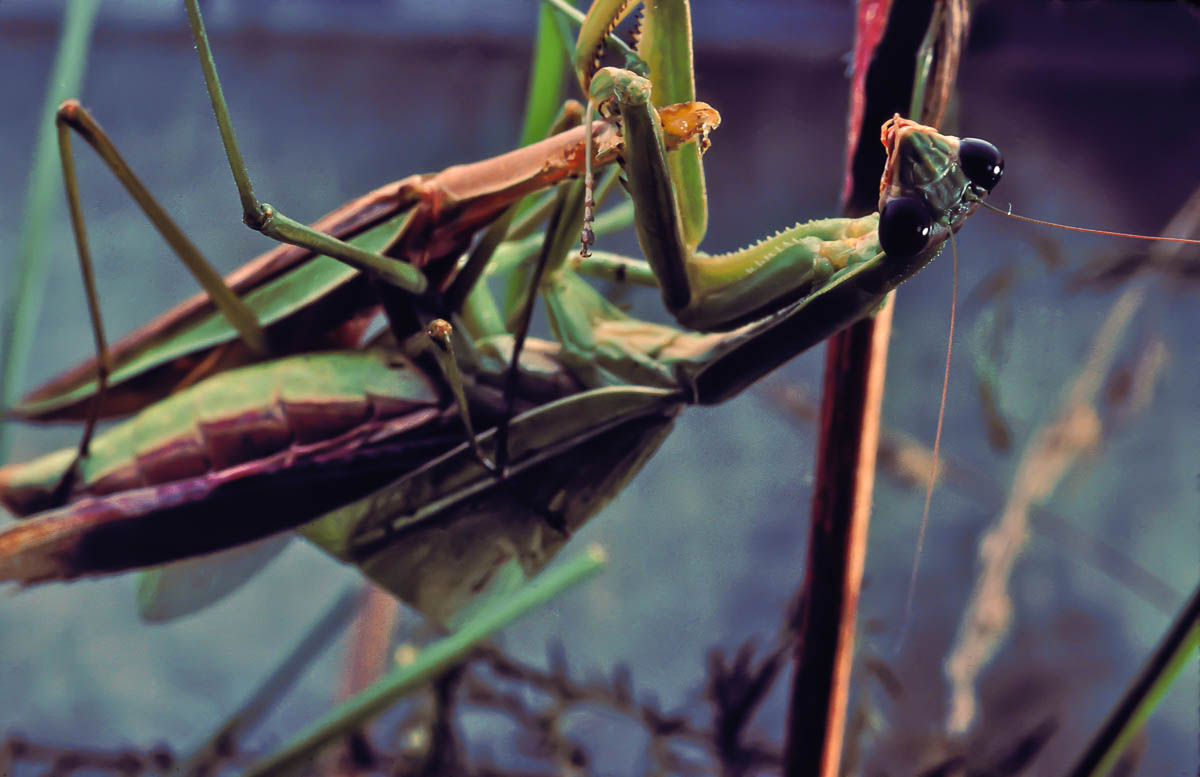
How I Did It
What I did to capture the story was set up a huge terrarium in my apartment, cut a hole in the side and paid the neighborhood kids a quarter for each egg case they brought me. Turned out that was a very bad idea as those industrious waifs brought them to me by the shopping bag!
I placed the egg cases in the refrigerator to mimic the effect of winter. Weeks later I took a few out at a time, put them in the terrarium and waited. And waited. And waited some more. Weeks went by, but finally one night the babies started emerging from their egg cases, 300 of them at a clip!
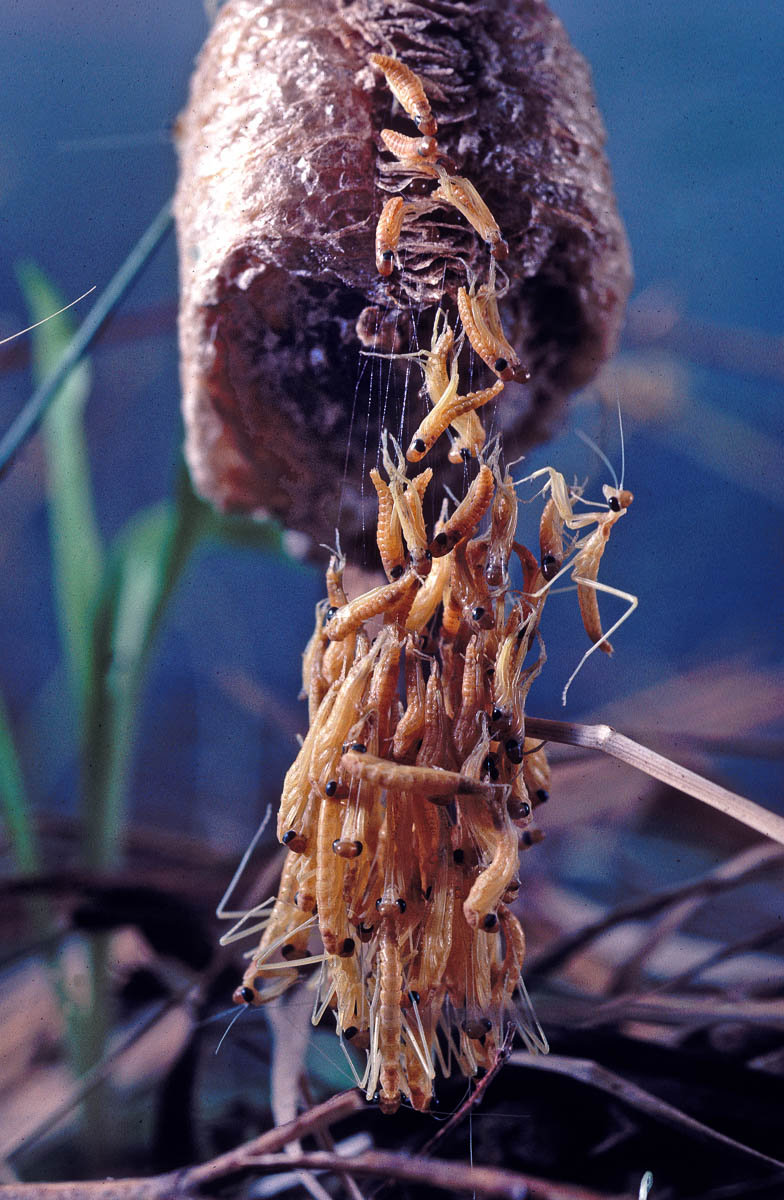
The problem was that this usually happened in the wee hours of the morning. One night I was so tired I forgot to put the lid back on the terrarium, For the next year I was plucking mantises from my curtains, my pillows and even my underwear. Unfortunately I was single at the time and dating. I learned that nothing in this world ruins the mood as quickly as an innocent praying mantis crawling across the bed.
So, it was a throwback for me today when I came back to my house and found a mantis on my front porch. I scooped up the critter, brought it downstairs and quickly set up my macro rig, which I haven’t touched in years.
The mantis was a bit chilled, but by time I finished the setup, he was warmed up and active.
A Macro Setup
Let me describe my setup for those of you who are interested in making your own macro rig. Macro photography is a great winter pastime and a chance to improve your skills in this area of photography.
My setup consists of:
DSLR camera, 200mm Nikkor macro lens, tripod, Nikon R1C1 macro kit (2 mini-strobes, adapter ring and much more), a clamp for positioning a reflector or diffuser, one or two SB800 flash units, and a frosted Plexiglas light box (or equivalent).
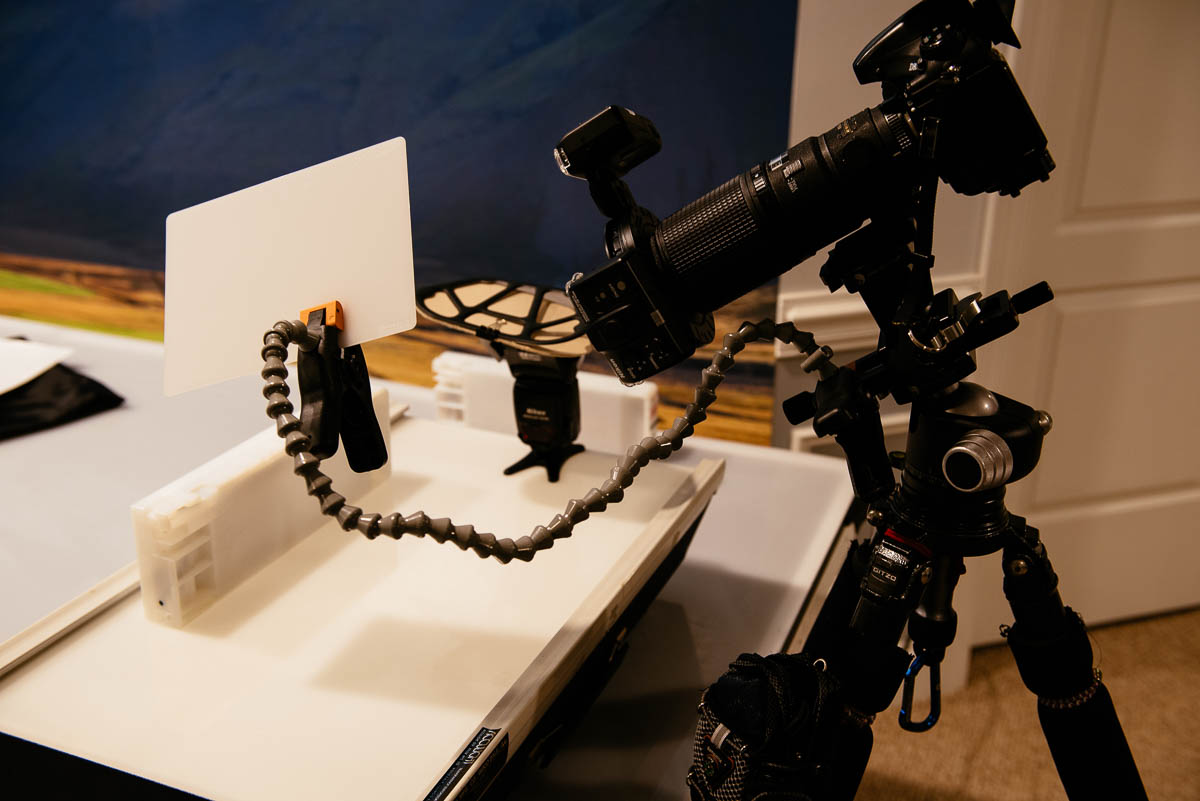
You might ask why I use a 200mm macro lens rather than the more common 65 or 105mm. The answer is that I prefer to have more working room away from the critters so that I don’t spook them. With the 200mm I can work from a distance of 10" and still get 1:1 images.

Also, light boxes can be found on the Internet nowadays for just a few dollars. I mean, who sorts slides today? But instead of the lightbox prop, you can use a terrarium. Just put plants and a few rocks and perhaps some moss in it and you have a very naturalistic environment.
Lights, Action, Camera
As with any type of macro photography, it all comes down to lighting. The great thing about the Nikon R1C1 is that you can rotate the flashes around the ring that sits outside your lens. That can provide you with a wide range of lighting options that mirrors your creativity; even lighting, shadows, backlighting. The flashes can also be mounted off camera, giving you limitless options for creative lighting.
In this case I did not have time to set up my terrarium, although I do plan to do so this week in time for winter. I placed my mantis on the light table, turned it on and began adjusting my lights. The R1C1 kit comes with the SU800 Commander module, a nifty and truly functional piece of gear. With the SU800 you can control multiple flash units wirelessly. The SU800 sits in your camera hotshoe. You can regulate the flashes in 1/3 EV steps. For these shots, for example, I set the left flash at Plus 1.7 EV, the top flash at Plus 3.0 EV and the right flash at Plus .7 EV. Of course the lightbox was also lit.
I had to boost the flash units to positive EV territory because I shot mostly at f32, to maximize my depth-of-field, which in macro is a real issue. Naturally, I focused on the nearest eye to get maximum perception of focus.
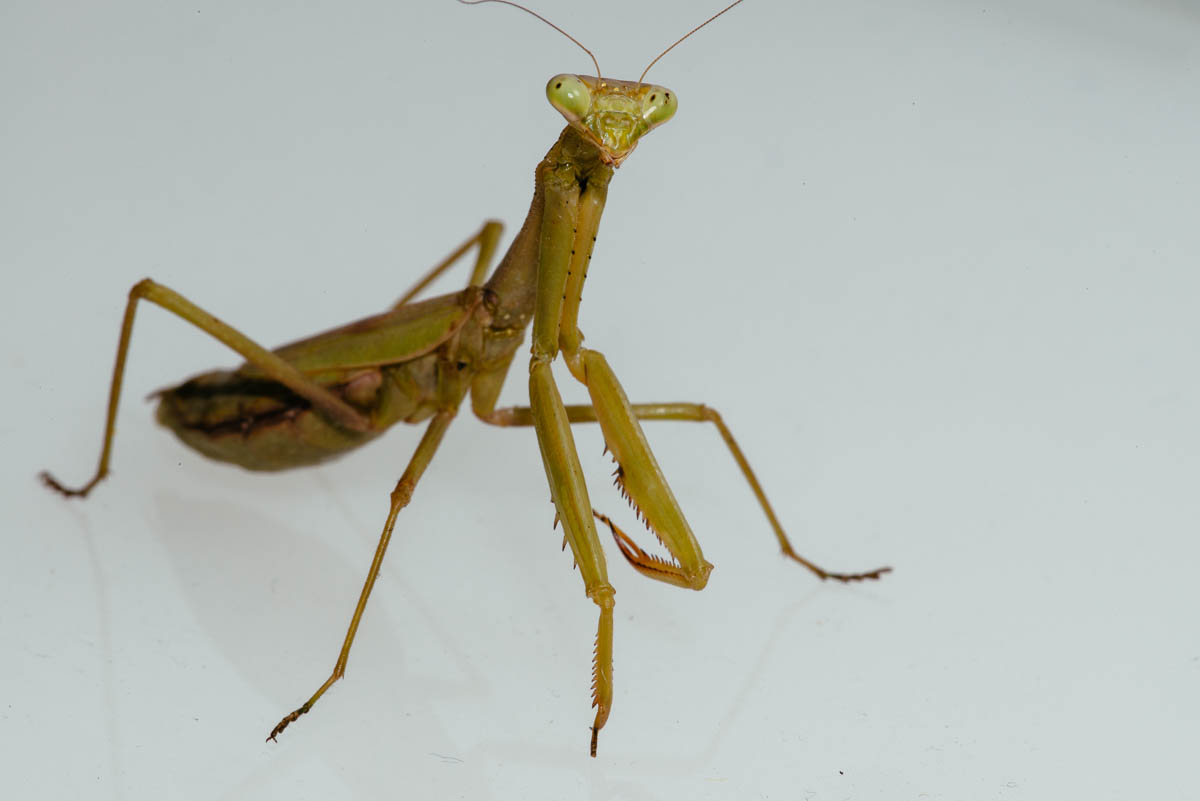
I made no adjustments whatsoever to the images here; they are straight out of camera. You will note that the image below is noticeably darker than the one above. That’s because you must give time for the flash units to recycle between shots or they will not deliver full power. In this case I was shooting too quickly, so I included this image to show you what happens.
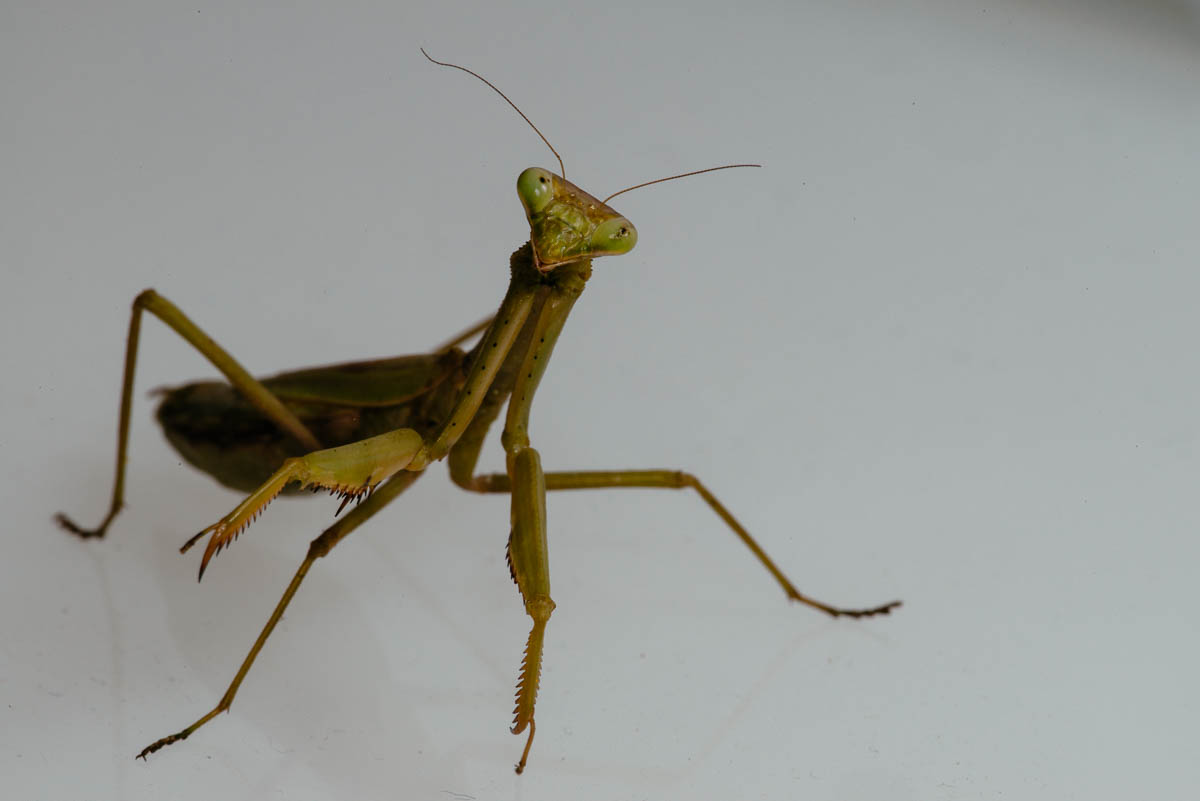
Oh, by the way, as soon as I was done with the shoot, I picked up the mantis gently and brought him back to where I had found him. What a sweet photo session it was. C’mon, admit it, this guy looks pretty cute, doesn’t he?